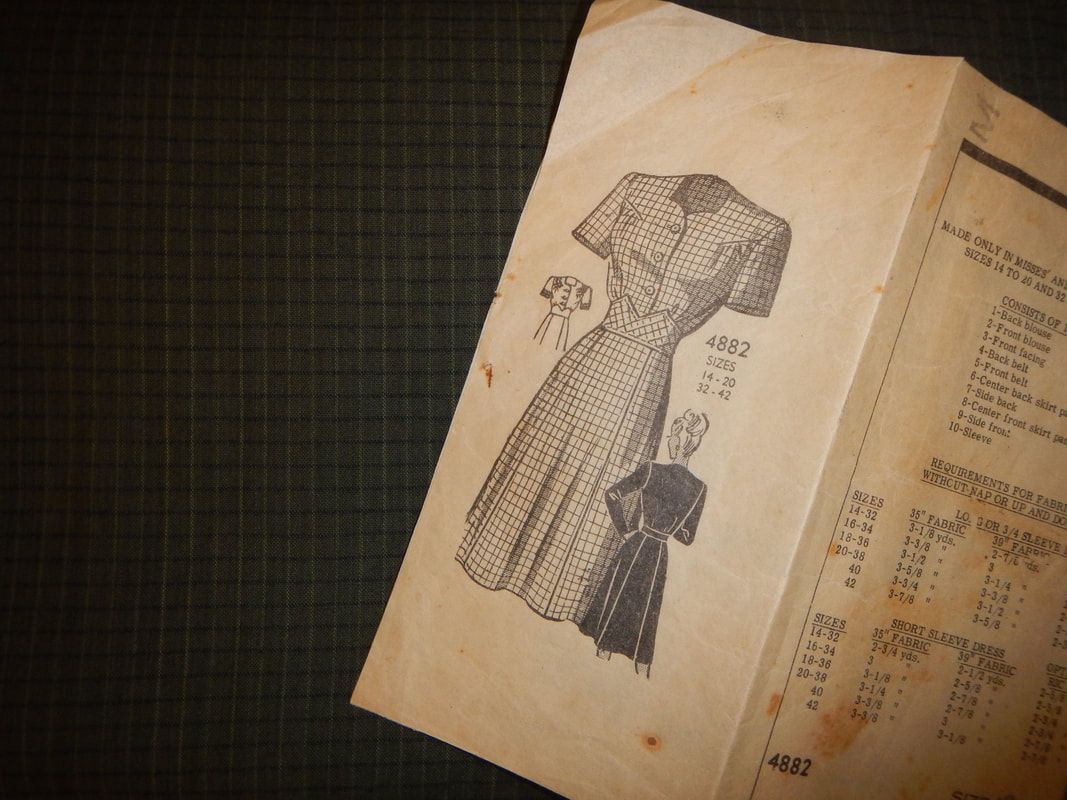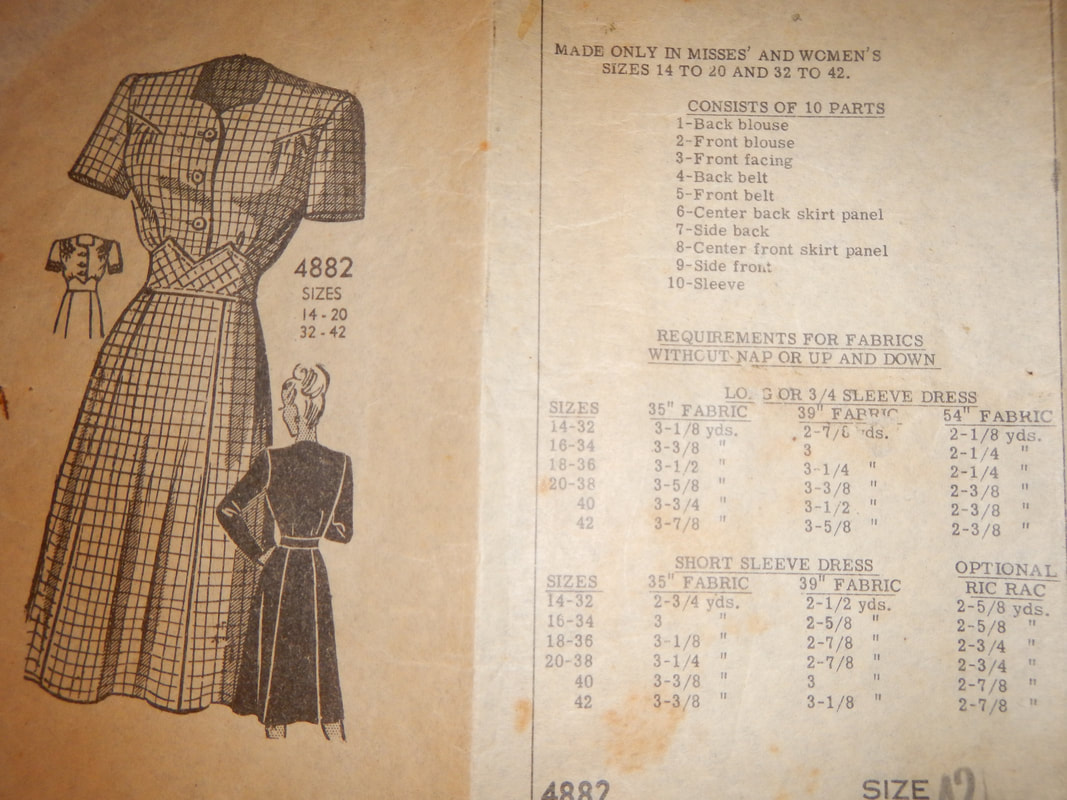And, as luck would have it, I found just such a fabric at Goodwill one day! Actually, they had a ton of it, so I bought it all! The fabric is a woven (not printed) check in dark green. Very nice drape to it, and nice hand. I want to make the long-sleeved version of the dress for winter. SCURRYING ABOUT THE INTERNET So, all excited about the fashion illustration, I open up the pattern and find... pre-cut pieces with no printing on them at all. Just cryptic perforations. A quick internet search yields the information that this isn't a dud pattern, it's the way all patterns used to be. So it'll be a new challenge for me! I begin with internet research. My first question is how old my pattern is. There's no date on the instruction sheet, and there's no envelope (perhaps there was but it got lost). The only clue is the name at the bottom: "Anne Adams Instructor". Anne Adams, I find, was a mail order pattern company that sold through newspapers from the 1930's through the 1970's. According to Vintage Stitching, this kind of pattern is rarely dated, so you have to go by the style of the dress. It looks like a 1940's dress to me: the long bias cuts and diagonal seams of the 1930's are gone, and a nipped-in waist and shorter skirt are in. The yardage requirement is low, so I think it's a war-time dress. Also, the yardage chart on the instruction sheet specifies fabric widths of 35", 39", or 54" wide. The 45" and 60" wide fabrics of today were not available pre-1950's. I next land on De-Coding Vintage Patterns, a nice overview of what vintage patterns look like and when they started getting printed instead of perforated. (Short answer, McCall company started printing patterns in 1919, when they noticed that perforations were less precise because hundreds of patterns got perforated at once, and the ones on the bottom of the pile would slip or skew. McCall was the only company printing patterns until 1938, when their patent expired and the other companies could get in on the game.) This article has interesting details about the patented technology of printing patterns and of printing instructions... but contrary to its title actually has no info on decoding patterns! I think the author intended it to be first in a series of posts, but I couldn't find the follow-up ones. Luckily, there is Thread's Magazine, with an article called Working with Vintage Patterns. That has a basic run-down of how to treat vintage patterns to keep them in good shape, alterations often needed to make vintage patterns work for modern bodies, and what common perforations mean. Rochelle of Lucky Lucille blog, quite an expert on sewing 1940's patterns, has a post explaining how to trace and mark the pattern for modern sewing. From info on these sites I make my plan. THE PATTERN WHAT TO DO? If I want to make a dress from this pattern, it will have to be for someone larger than me. If I want to make this dress for myself, I will need to either grade the pattern down, or simply "hack" it by taking another dress pattern that fits me and changing the style lines. Either way, I will have to make a muslin and alter it to fit, and I will use the vintage instructions for construction. It will be a learning experience, that's for sure! So that's on my to-sew list...
1 Comment
The Sister
2/13/2018 10:51:36 am
I could see you looking rather fetching in this dress. I don't know much about how patterns work, so I guess you can't just wing the sizing. Hmmm... too bad. I hope you find something that'll work so you can make the dress! You're so cute. :-)
Reply
Leave a Reply. |
Karen Roy
Quilting, dressmaking, and history plied with the needle... Sites I EnjoyThe Quilt Index Categories
All
Archives
March 2024
|


 RSS Feed
RSS Feed